
Ready to Master the Art of Persuasive Communication? Unlock Your Success Today!
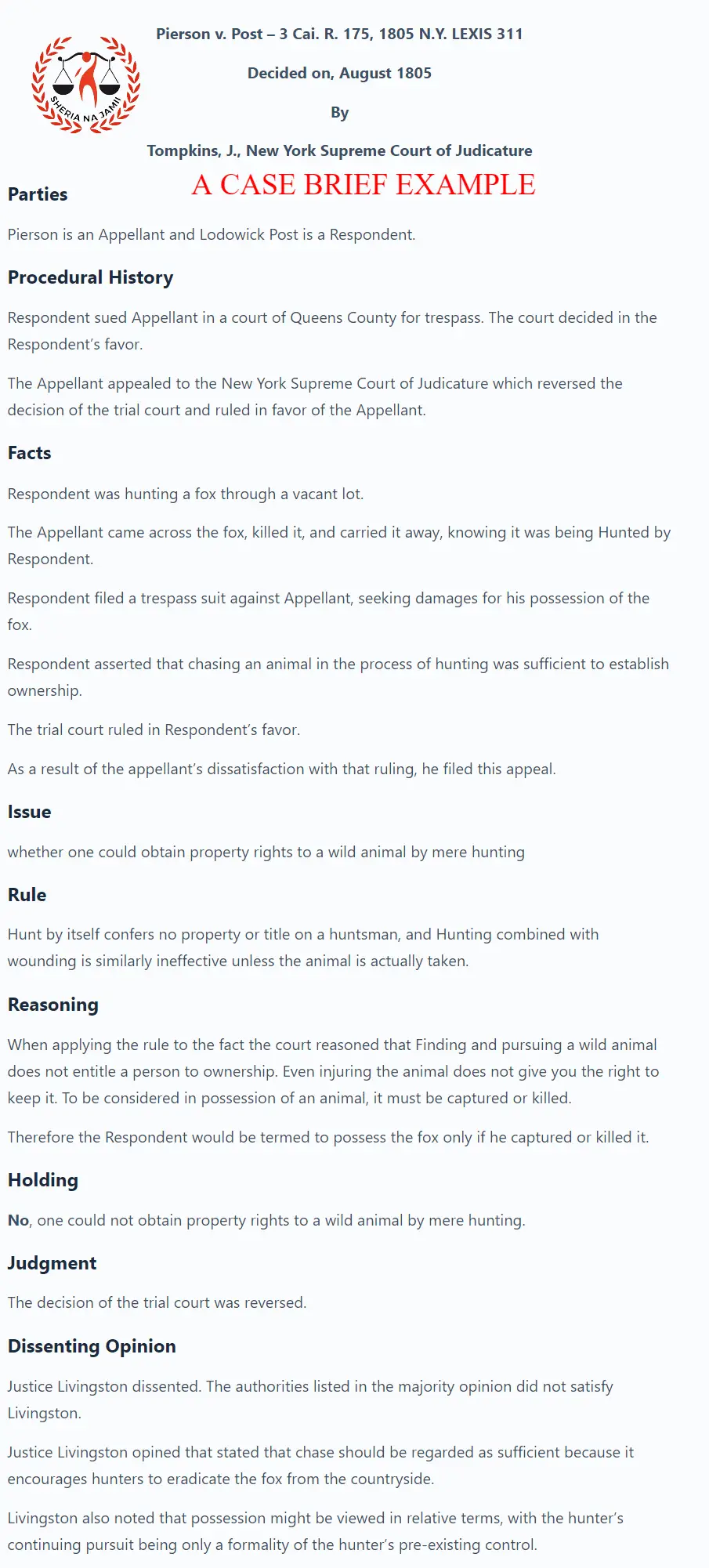
This post teaches you how to write a case brief step by step.
Case briefing is a crucial professional skill that, not only law students but also lawyers, must master.
That’s this easy-to-follow guide is divided into four comprehensive steps that show you, with vivid examples, how to case brief.
Here I will take you through
Transform Your Communication, Elevate Your Career!
Ready to take your professional communication skills to new heights? Dive into the world of persuasive business correspondence with my latest book, “From Pen to Profit: The Ultimate Guide to Crafting Persuasive Business Correspondence.”

What You’ll Gain:
So, let’s get right down to it and teach you how to brief a case.
Read also: How to become a lawyer: From Undergrad to the Bar
Jump to section
A case brief is a short but complete summary of a case judgment that highlights all essential aspects of the case including the legal principles and rules that were established in that case.
A Case brief is an excellent learning tool.
Case briefing identifies the most important parts of a case, making it much easier to collect and review the essential information of the case.
A case brief is written as a short summary of the court decision by showing who were the parties of the case when was the case decided, which court passed the final decision, the procedural background of the case, the material facts of the case, issues determined by the court, the legal principle established by the court, the decision of the court and the reasons for that decision.
The following is how you can write a case brief (step by step)
The first step toward writing your case brief is selecting the structure of your case brief simply because the exact form of your briefs may and can vary from case to case.
By selecting the structure I mean that before writing your brief you must sort the essential components of the case that must be included in your brief.
Therefore this step involves two major activities, the first is to familiarise yourself with the basic contents of the case brief (covered in step 3), and the second is to sort the contents that will suit your case brief.
For example, a student may ask the instructor to ensure that the structure you have chosen is acceptable.
Regardless of the structure, every brief should include the following information in step 3.
Selecting the structure will help you understand the case and recall the needed information.
Do you have a structure? you are ready for the second step.
To appropriately summarize the case, you must read it attentively and thoroughly.
Reading the whole case will help you understand the whole scenario and identify what is relevant to your case brief and what is not.
While reading the whole case you must pay attention to the facts of the case, issues, ruling and the rule established by the court.
I recommend you read the full judgment twice. The first time you get the big picture and the second time you focus on the important details.
after you have read the case for the second time, now you are ready to brief it.
Generally, a case brief consists of nine major parts that are; heading, Parties, facts, procedural history, Issues, Rule, Analysis, Holding, and Judgment. the other optional parts include Concurring/Dissenting Opinions of the judge your Personal reaction and obiter dictum.
Here I will use the case of Lucy v. Zehmer as an example to show you exactly how you can write your case brief.
You may read its case brief here or access the full decision through this link
Let’s dive right in.
This is the first part of your case brief. It shows the citation of the case.
The heading of your case brief must include, the name of the parties, the year of decision, citation from the case reports book, and the court deciding the case (where necessary the name of the Judge).
for example
Lucy v. Zehmer – 196 Va. 493, 84 S.E.2d 516 (1954)
Decided on November 22, 1954
by
Archibald C. Buchanan, Supreme Court of Virginia
Parties referees to the individuals who are involved in the case.
The role of the parties varies from case to case.
In civil cases, the one who sues is called the plaintiff while the one who sued is referred to as the defendant parties involved in a criminal case are republic/ state versus the individual who refers to as accused or defendant.
Also in a civil petition or application, the party who files the petition is called the petitioner/ applicant, and the one who replies is called the respondent.
In Appeal the part who appeal is referred to as the Appellant and the one who replies is called the respondent or appellee.
So in writing your case brief you must clearly show who is the plaintiff/petitioner/appellant and who is defendant/respondent/appellee.
for example;
Parties
W.O Lucy is a Appellant and A.H Zehmer is a Respondent.
This part shows the disposition of the case from the laser court to the court in which you’re brief its judgment.
In your procedural history, you must clearly indicate the decision of the lower court, who appealed to the higher court, and the reason for appeal thereof.
for example
Procedural History
Appellant was dissatisfied with the decision of the Circuit Court of Dinwiddie County, by Judge Hon J. G. Jefferson, Jr who decided in the favour of the respondent that there was no valid contract between the parties.
The Appellant appealed to the Supreme Court of Virginia on the ground that the respondent has already accepted his offer so he can not refuse it, The Supreme Court Virginia reversed and remanded the decision of the trial court.
This part explains the most important story of the case.
To write your facts clearly, explain all the relevant people, causes of action, locations, and objects involved.
Avoid rewriting everything.
It’s okay to summarise the facts in your own words.
Where necessary provide information on which courts have already heard the case. Consider how the matter has progressed through the legal system and what the court’s previous decisions have been.
In their Introduction to case briefing guide, the Northwestern Pritzker School of Law states the facts section is the crucial part of the case brief, it should aim to accomplish three things; i) Make clear who the parties are ii) Tell the story briefly rather than just list facts and iii) Keep your focus on the facts that determine the outcome.
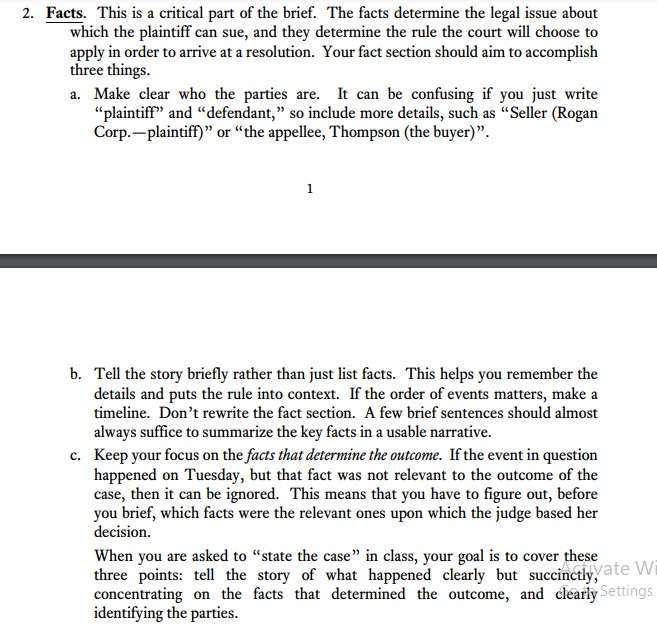
You may read the complete guide here
For example
Facts
The Respondent and his wife Ida S. Zehmer owned the piece of land measuring 471.6 acres.
W. O. Lucy, the Appellant, had known Zehmer for a long time and had shown interest in purchasing the farm but his prior attempts to purchase it proved futile.
On December 20, 1952, With a bottle of whiskey in his hand, Lucy entered Zehmer’s restaurant.
They drink together and discussed the possibility of purchasing the land.
After the discussion, Zehmer wrote on the back of the restaurant’s receipt. “We thus agree to sell the farm entirely to W. O. Lucy for $50,000.00,” and he signed the note with his wife.
Zehmer later said that his wife originally refused to sign the instrument when he asked her to, but she eventually agreed when Zehmer persuaded her that his intention to sell the farm was only a joke.
The next day, Lucy discussed the acquisition with his brother, J.C. Lucy, and he engaged an attorney to investigate the title.
After assuring Lucy that the title was clear, the attorney wrote Zehmer a letter inquiring when he planned to finish the sale.
Zehmer responded that he never planned to sell the land and that the message signed by him and his wife was written in jest.
Appellant sued Resposndent for specific performance of a contract to purchase the farm in the Circuit Court of Dinwiddie County which decided in the defendant’s favor, hence this appeal.
Issues refer to the point of determining which court considers its decision.
Here you must clearly identify the point of law in dispute and the key facts of the case relating to that point of law in
dispute.
There is no minimum or maximum number of issues, that will purely depend on the nature of the case.
The goal is to focus on the main issues only.
To properly ascertain the main issues you may ask yourself what is the plaintiff’s claim against the defendant? or What is the appealing party claiming the lower court did wrong?
You may write your issue as a statement or question like was there a valid contract? or whether there is a valid contract.
for example
Issues
Was there a valid contract?
Is the specific performance a proper remedy?
This part shows the legal principle that the court uses to determine the case.
The court may derive rule of law from the statute, equity, and precedent and if there is a lacuna, a court may create a new rule, for example, in the case of Rylands v Fletcher the court established the strict liability rule.
The rule or legal principle may be expressly stated in the decision or it may be implied.
The rule forms the base of the court decision.
To get it clearly, you must ask yourself, what was the principle that the court applied to reach its decision?
for example
Rule
The contract is nevertheless enforceable if one of the parties has a reasonable belief that the other party intends to enter into the agreement while he does not.
This party covers the court analysis of the issues as far as legal principles are concerned.
The court’s reasoning refers to how the court applied the rules/legal principles to the circumstances of the case in order to reach a decision. This involves both logical applications of rules and policy arguments used by the court to support its judgment.
for example
Analysis
In reaching its decision, the appellate court was highly focused on the intention and belief of the Plaintiff and not the defendant.
In this case, the court is departing from the required “meeting of the minds” standard for a valid contract.
This part shows the court’s response to the issue raised.
The holding is always the positive (yes) or negative (no) statement to the issues.
for example
Holding
In relation to the first issue, the answer is Yes.
The court held that there was a vail contract between the parties.
The court observed that Defendant was not so inebriated that he was oblivious to the nature and effects of the instrument he used.
The circumstances surrounding the purchase led Lucy to believe it was a real business transaction rather than a joke.
In relation to the second issue, the answer is Yes.
The court held that specific performance was the proper remedy for the plaintiff.
Judgment is the court’s final decision on the parties’ rights, as well as the court’s response to a relief request.
The judgment is usually found at the end of the opinion, it is delivered using words like affirm, remand, reverse, allowed, granted, or reverse with instructions, etc.
for example
Judgment
The decision of the trial court was reversed and remanded.
In most cases, Judgement should be the last part of the case brief, but in other cases, you may include the following optional components in your case brief
This part is relevant when a judge hears a case, he or she may disagree with the majority’s ruling and write a dissenting opinion, or when another judge agrees with the result but not with the majority’s rationale and write the concurring opinion.
You should take note of the reasons why the concurring/dissenting judge(s) did not join the majority opinion and put them in this section.
This part is necessary when you have your personal reaction regarding the decision of the case.
What are your thoughts on and criticisms of the decision? Is there anything you like? Dislike? What are the similarities and differences between this case and the others you’ve read? Do not take the court’s decision at face value. Examine the logic in each situation. Is it in good condition? Is it in any way contradictory? What are the ramifications of this decision on the political, economic, and social levels?
Obiter dictum is the Latin word that means other things said in English.
In law, obiter dictum refers to a statement, suggestion, or observation made by a judge in an opinion that is not required to settle the issue and therefore is not legally binding on other courts but can nonetheless be used as persuasive authority in future litigation.
A dissenting judgment may also be referred to as obiter dictum.
You may learn more about the obiter dictum here
But for now, let’s move to the last step.
Now you have your case brief. it is time to review it to see if it makes sense.
Your case brief will be termed to make sense only if it covers all essential components of the full case.
To check it, you must ask yourself these questions,
If you answer all the questions in the affirmative, then your case brief makes sense.
If not, review and amend the areas that appear illogical and irrelevant.
The following is an example of a case brief

(here add the full citation of the case including the parties, the date of the decision, the court, and the Judge who passed the decision)
example
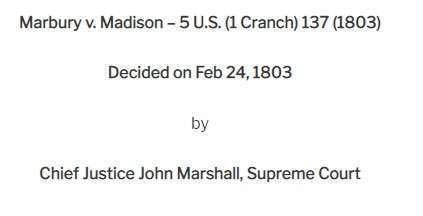
(add the full name of the parties and their role example plaintiff, respondent, etc)
example

(Explain the whole litigating stage through which the case passed and what happened to each stage, starting with the lower court and upwards)
example
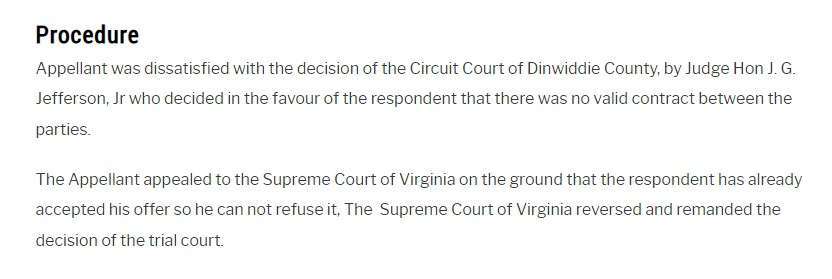
(summarise the key takeaways of the case, explain all relevant people, cause of action (s), locations, and objects involved)
example
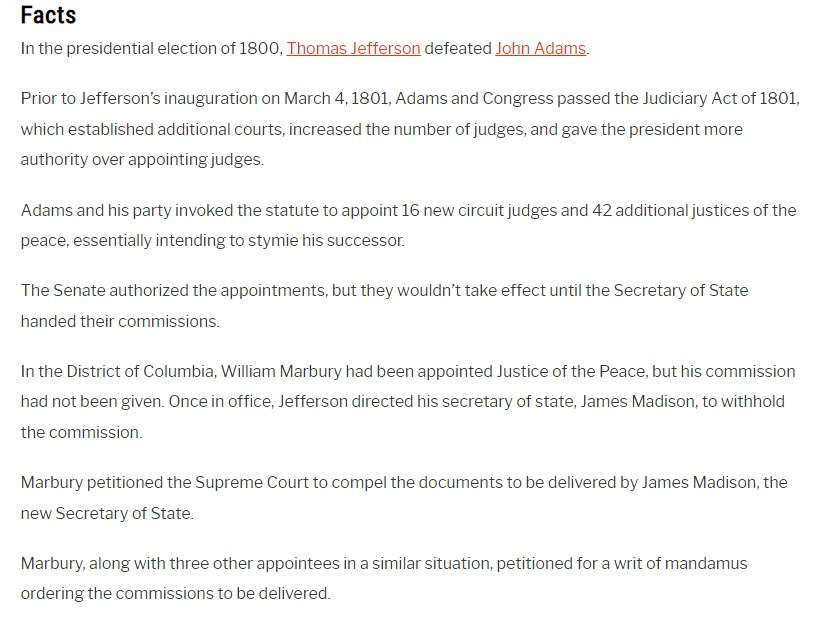 Issues
Issuesexample
(Identify the legal issue that the court addressed)

(state the legal principle (s) that the court uses to determine the case)
example

(Explain how the court applies the rule to the facts)
example
 Holding
Holding(explain the response of the court to legal issues, state Yes or No)
example
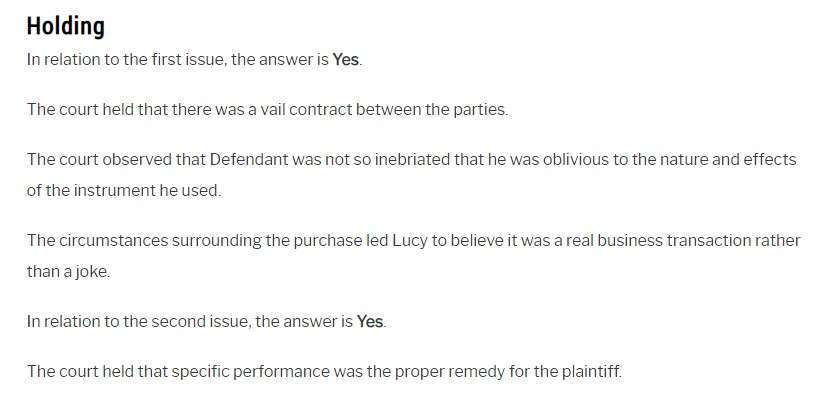 Judgment
Judgment(state the court’s final decision)
example 1.

Example 2

(state the opinion of the judge which appears to differ from the opinion of other judges which forms the main decision of the case. Don’t forget to show the reasons for dissenting)
(identify any alternative decision provided by the court)
(explain your personal view of the case decision, it may be criticism, comments, or attention)
My aim here was to show how to write a case brief step by step.
so if you were wondering how to case brief, what you need to do is